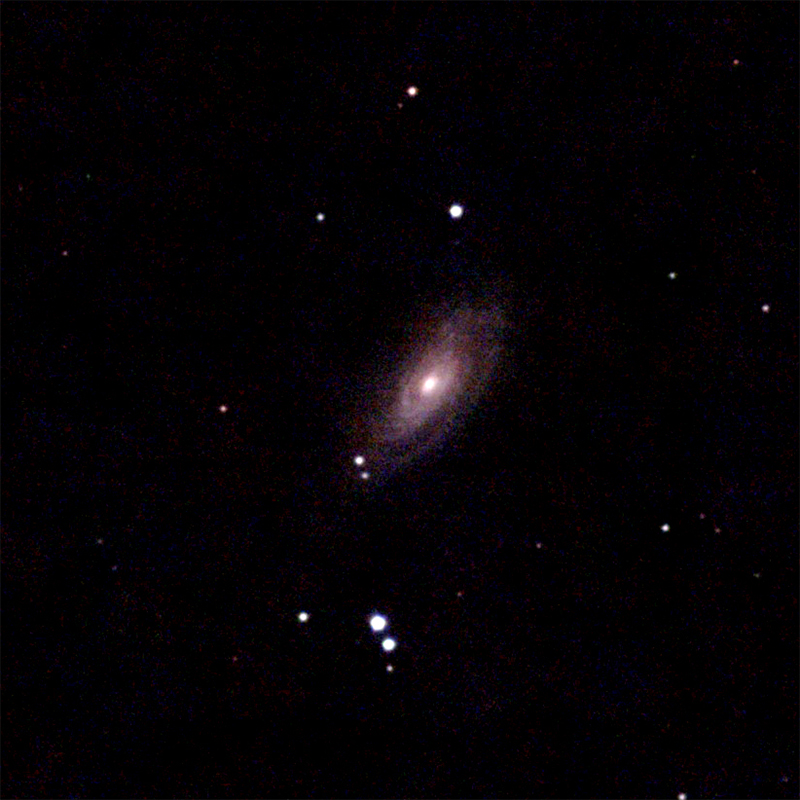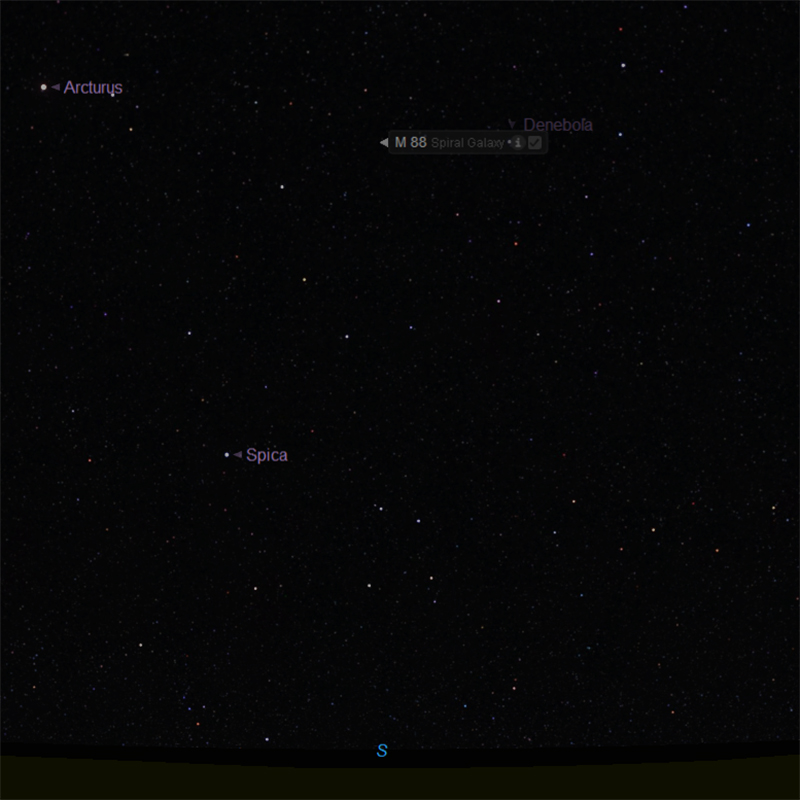M88

Credits: Keith Turnecliff, Nerja, Spain
M88 contains an active galactic nucleus, meaning the central region of the galaxy is more luminous than the rest of the galaxy.
At the galaxy’s core resides a supermassive black hole estimated to be 100 million times more massive than our Sun. M88 contains around 400 billion stars and is traveling away from our galaxy.
Charles Messier discovered M88 in 1781 on the same night that he discovered eight other Messier objects. Today, it can be observed with binoculars under clear viewing conditions.
Smaller telescopes will reveal an elongated object with a brighter core, while larger telescopes will unveil further details, such as a more defined core.
Facts about M88 by Keith Turnecliff
Messier 88 (also known as M88 or NGC 4501) is a spiral galaxy about 50 to 60 million light-years away in the constellation Coma Berenices. It was discovered by Charles Messier in 1781.
M88 has a magnitude of 10.4 and is best observed in May.

Best viewed with resolution 1920 x 1080.
Credits: Image courtesy of Starry Night Pro Plus 8, researched and implemented by Keith Turnecliff.